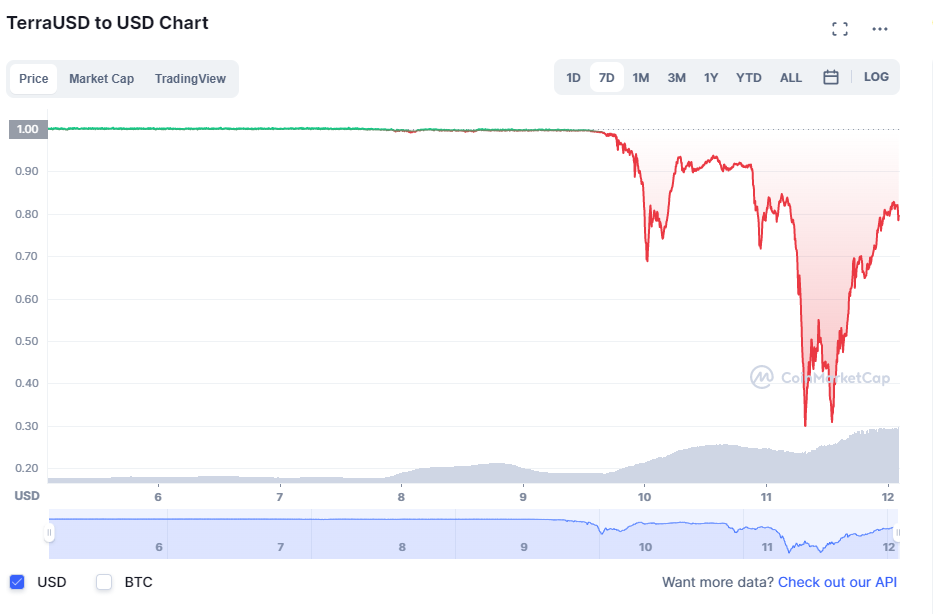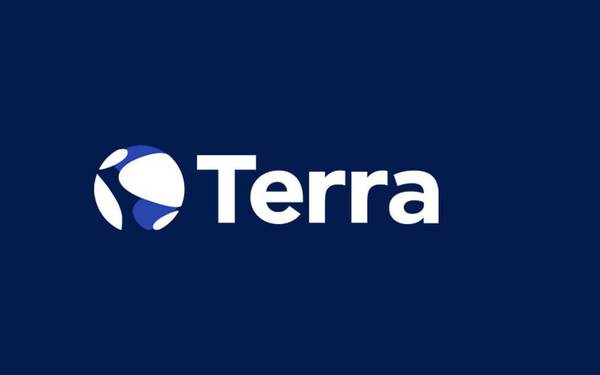The algorithm-driven stablecoin TerraUSD (UST) on May 11 lost up to 50% as investors sold off and waited for rescue moves from founder Do Kwon.
Specifically, at 10am on 11/5 London time, the UST currency moved away from the target level of anchoring 1 UST for 1 USD to only 50 cents, thereby evaporating billions of USD in market capitalization. Similarly, the UST-linked Luna coin has also depreciated by 83% in the past 24 hours.
Before the crash, the total capitalization of UST was about 18.4 billion USD, today it is only about 7.7 billion USD.

Similarly, the Luna coin has depreciated from a peak of $120 to around $5 in just one month, equivalent to a 96% drop in value. The total capitalization of this coin has gone from $36 billion to just over $2.7 billion.
By the early morning of May 12, according to Vietnam time, the TerraUSD had slightly recovered to $0.7.
Usually, stablecoins are digital currencies that are pegged to a stable asset like gold or fiat money (USD, EUR…). On the market today, there are a number of coins such as USDT or USDC that are pegged to the USD.
However, UST is a digital currency that has the ambition to remove this stable collateral in order to completely abandon the involvement of banks, thereby becoming the standard for exchange rates for digital currencies.
Specifically, Terra’s platform allows UST and Luna to be converted to each other at a fixed exchange rate. That is, no matter how much 1 UST is in the market, you can still exchange 1 USD worth of Luna and vice versa. Thanks to this mechanism, investors can speculate on arbitrage as well as maintain the theoretical nominal standard price.

As advertised, the UST coin will anchor the nominal exchange rate of 1 UST to 1 USD thanks to the money burning mechanism. That is, to exchange for Luna, the Terra platform will burn the corresponding amount of UST and vice versa, thereby self-regulating supply and demand.
In addition, keeping the nominal exchange rate on the Terra platform also stimulates speculators to trade to eat the difference, thereby helping to balance the market to bring the real exchange rate back to the nominal standard.
However, anchoring 1 digital currency to another digital currency and vice versa and then using an algorithmic mechanism to burn less coins when converting is also risky. That’s when both currencies depreciate because speculators lose faith in both, then there will be no market equilibrium trade because everyone wants to sell and take profits.
Multilevel scam?
The supply-demand relationship between UST and Luna is key to keeping the nominal standard rate of 1 UST to 1 USD. However, the UST coin has fluctuated for a long time, causing investors to lose confidence, affecting Luna and vice versa, becoming a vicious circle that causes both of these currencies to depreciate sharply.

Billionaire Do Kwon
In addition, many experts believe that billionaire Do Kwon’s Terra shows signs of multi-level fraud. Anchor deposit protocol on Terra has raised capital for Luna coin at an interest rate of up to 20%/year, thereby raising the price of this coin as well as its brother UST.
However, despite the large capital mobilization, the lending rate is very small and most of the interest paid to users comes from Luna’s own project, thereby raising the suspicion of using money from speculators first to pay later. .
On Twitter, co-founder Do Kwon tried to reassure the community by pledging to pump more money to save Terra, but few believed when the sell-off intensified.
Before the crash, Terra was the second largest decentralized finance platform in the world, after Ethereum.
*Source: Bloomberg